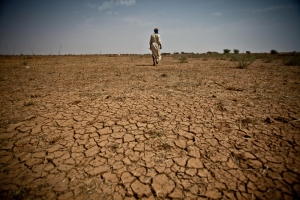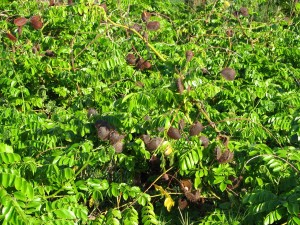Research Paper written by London swaminathan
Research Article No.1654; Dated 16th February 2015.
Varahamihira on Water Divination
Varahamihira in his Brhat Jataka has devoted one full chapter for exploration of water springs. He deals with the subject in a very scientific way. There is no mumbo-jumbo. He links water springs with certain trees and anthills. We all know that both the trees and ants need water. Ants get water from moisture in the atmosphere. Naturally ants build ant hills where there is humidity. Ant hills need moisture for its existence. Certain trees with lot of leaves need more water. So they grow only under certain conditions. In some slokas (couplets) he refers to frogs as well. He even tells us how to find water by tapping the ground and listening to the sound!
Ancient Hindus were keen observers of Nature. They observed the huge heavenly bodies as well as the tiny ants. To develop a branch of study like this, they must have observed them for centuries!
Varahamihira was not the first one to write on this subject. He and his commentators refer to various authors who lived before Varahamihira. He wrote it in the fifth century. He says that Baladeva, Garga, Kasyapa and Devala wrote about rain water and Saraswata and Manu wrote books on underground water. Unfortunately we lost the books written by Manu and Saraswata. But commentator Bhattotpala gives us lot of information.
Varahamihira says, “ Just as there are veins in the human body so do they exist higher up, others lower down, in the earth. Rain water has no colour or taste; but ground water assumes colour taste from its surroundings”.
The Gods who preside over eight directions are Indra, Agni, Yama, Nirrti, Varuna, Vayu, Chandra and Siva. The water veins in different directions are named after their presiding deities.
What is interesting is that his observation of the trees, the soil underneath, the ants and frogs living in the vicinity and the direction of water veins. I have given only the bare facts, not all the details. One must remember that he gives this for the waterless arid lands and deserts. If it is a river bed, we don’t need a Varahamihira to tell us where to dig a well!
Calamus rotang
Now Varahamihira gives the names of trees and the source of water at the depth of …. Cubits in waterless places:–
1)Rotang Tree – Depth of seven and half cubits
(A cubit is approximately 18 inches)
Calamus rotang: Rattan palms (Pirampu in Tamil)
If a pale white frog found – water is at two and half feet depth.
2)Jambu tree — water is at the depth of 10 cubits.
Jambu: Syzygium jambolanum (Family: Myrtaceae)- Naval in Tamil.
Ant hill near Jambu tree – inexhaustible water at 10 cubits
Fruits from Jambu tree
3)Fig tree – 12 and half cubits
Ant hill near Arjuna tree – 17 and half cubits.
4)Arjuna : Terminalia arjuna (Family: Combretaceae);
Marutha maram in Tamil
Bilva/ Vilva Tree
5)Bilva and Fig tree joined together – 15 cubits
Bilva = Aegle marmalos (Family: Rutaceae)
Ant hill near opposite leaved fig tree (Phalgu) – 16 cubits
Fig Tree is Aththi in Tamil; Bilva is Vilvam in Tamil
6)Kampillaka tree – 16 cubits
Mallotus philippinensio
Kamla or Red Kamala or Kumkum Tree
7)Ant hill near Myrobalan tree – 7 and half cubits
Amla (nellikkay in Tamil), Haritaki (Kadukkay in Tamil) all belong to this group.
8)Ant hill near mountain ebony tree – inexhaustible water at the depth of 22 and half cubits
Bauhinia species
9)Echites tree with ant hill – 25 cubits
If a frog is found under any tree – 22 and half cubits
Echites scholaris or Alstonia scholaris (Devil tree)
Grey banduc (Nickernuts tree)
10)Ant hill near Grey Bonduc tree – 17 and half cubits
Nickernuts=Caesalpinia bonduc
11)Ant hill near Bassia tree – 37 and half cubits
Bassia latifolia = Madhuca indica (Family Sapotaceae)
Jatropa or Mahwa; Iluppai in Tamil
Bassia latifolia
12)Ant hill + Durva grass + Tilaka tree – 25 cubits
Durva grass: Cynodon dactylon
13)n Tilaka tree:Clerodendrum phlomoides (Agnimantha, Vaijayanthi in Sanskrit)
14)Ant hill near Kadamba tree – 28 cubits
Kadamba: Anthocephalus cadamba (Rubiaceae)
(Katampa maram in Tamil)
15)Ant hills +Palm or Coconut tree – 25 cubits
Coconut: Cocos nucifera (Arecaceae)(Tennai in Tamil)
16)Palm tree: Borassus flabellifer (Palmae) (Panai in Tamil)
17)Ant hill + Daru haldi tree – 28 and half feet
Berberis aristata
Daruhaldi
18)Ant hill +Asmantaka tree – 17 and half feet
Asmantaka tree : Bauhinia tomentosa (Pilo asondaro in Gujarati)
19)If there are creepers Navamalika, Lakshmanaa – 15 cubits
Navamallika: Jasminium arborescens
Then Varahamihira describes glossy leaves of the trees and its link to underground water sources.
He says that if one branch lowers towards earth that indicates underground water.
Kantakari/ Solanum xanthocarpum
Sound and Water
If the earth being struck by feet emits a loud and pleasant sound, a northerly water vein will be found at the depth of 17 and half cubits.
If the fruits or leaves look unnatural that is also an indication of underground water according to Varahamihira.
20)If Kantakari (Prickly Nightshade) is seen without thorns that shows water is at the depth of 17 and half cubits.
Kantakari :Solanum xanthocarpum (Kandankattari in Tamil)
If steam or smoke arises from the ground that shows water is at the depth of 10 cubits.
Then he explains water sources found in desert regions. This is a lengthy chapter with 125 couplets. If villagers living in arid regions study this they will be benefitted. Alternately botany departments of local colleges can help our people. There is no equipment or money required to identify the sources. Only when it comes to digging a well, money and man power are required. This must be studied seriously and utilised for the benefit of the people.
Pictures are taken from various sites; thanks.









You must be logged in to post a comment.